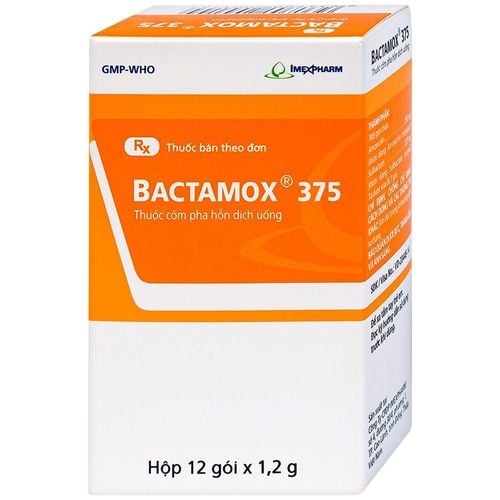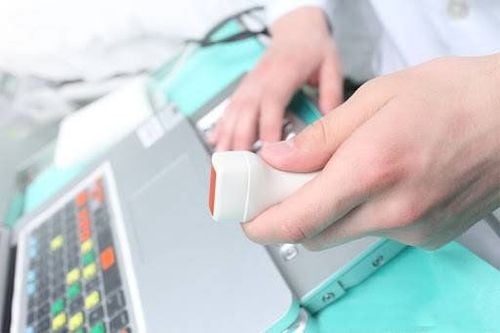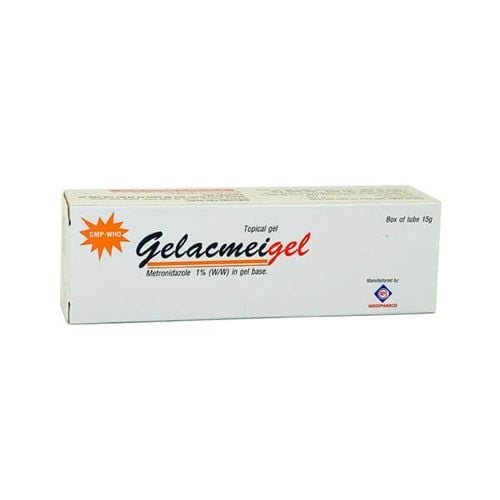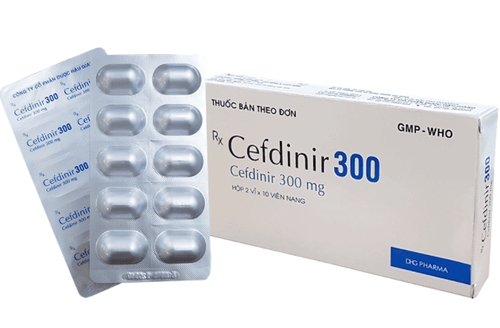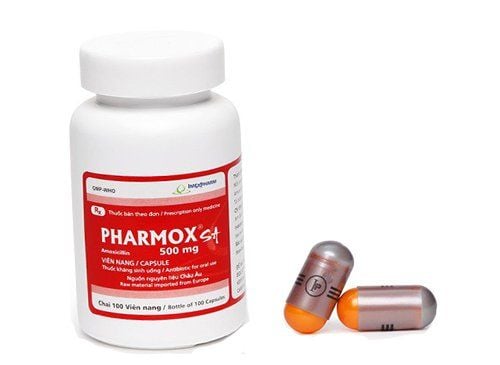This is an automatically translated article.
In the list of prescription drugs, Clindacine 300 is an antibiotic indicated in cases of bacterial infections. So specifically, what is the use of Clindacine 300, how to use it, how to use it,... Let's find out more right in this article.
1. What is Clindacine 300?
Clindacine 300 belongs to the group of drugs to treat parasites, anti-infectives, antibiotics, antivirals and fungicides. In the list of prescription drugs, Clindacine 300 is sold at pharmacies, hospitals, and specialized clinics.
Clindacine 300mg is produced domestically by Vinh Phuc Pharmaceutical Joint Stock Company (VINPHACO). Registration number VD – 18003 -12, TCCS standard.
Main ingredients of Clindacine 300mg include:
Clindamycin; Disodium EDTA; benzylic alcohol; Distilled water for injection Clindacine 300mg is packaged in white and blue rectangular boxes. Packed in a box of 5 ampoules of solution for injection, 2ml each.
2. Uses of Clindacine 300mg
Clindacine contains Clindamycin - an antibiotic of the lincosamide group. Its main use is binding to the 50S subunit of the ribosome, inhibiting bacterial protein synthesis. It is bacteriostatic at low concentrations and bactericidal at high concentrations.
Gram (+) aerobic cocci such as: Staphylococcus aureus, Staphylocccus epidermidis, Steptococius, Pneumonoccus; Anaerobic Gram (+) bacilli: Bacteroides and Fusobacterium spp; Non-spore forming anaerobic Gram (+) bacilli: Proponibacterium, Eubacterium and Actinomyces spp; Anaerobic Gram (+) cocci: Pepfococeus and Peptosireptococcus spp., Clostridium perfringens (trit C. sporogenes and C. tertium). Other bacteria such as: Chlamydia trachomatis, Mycoplasma brominn, Toxoplasma gondii, Plasmodium falciparum, Pneumocystis carinii, Gardnerella vaginalis; In general, Clindacine 300mg has a bactericidal effect, specifically against the above bacteria. In addition, bacteria that are often resistant to Clindacine 300mg such as: aerobic Gram-negative bacilli; Streptococcus faecalis; Nocardia sp; Neisseria meningitidis; Staphylococcus aureus resistant to methicillin; Haemophilus influenzae.
3. Indications Clindacine 300mg
Drug Clindacine 300mg is usually indicated for cases such as:
Inflammation caused by bacteria sensitive to Clindamycin; Treatment of patients who are allergic to penicillin; Prevention of endocarditis or surgical infection in subjects allergic to penicillin or those who have been treated for gonorrhea with penicillin; Aspiration pneumonia, lung abscess, severe respiratory infection caused by anaerobic bacteria; Intra-abdominal infections such as peritonitis, intra-abdominal abscess; Purulent wound infection (due to surgery or skin trauma); Septicemia ; Maternal fever, pelvic and genital tract infections in women: endometritis, tubal abscess, pelvic cellulitis, vaginal infection after surgery due to anaerobic bacteria; Trauma to the eye; Gaseous gangrene. Clindacine 300mg is indicated in many cases of bacterial infections. However, when using it, it is necessary to consult a doctor to ensure safety.
4. Dosage, how to use Clindacine 300mg
How to use Clindacine 300mg that is injected intramuscularly or intravenously intermittently (continuously) with a dilution not exceeding 12mg/ml. Injection rate should not exceed 30mg/min. In 1 hour, do not inject more than 1.2g intravenously, do not inject more than 60mg/time intramuscularly.
Dosage of Clindacine 300mg is indicated as follows:
For adults:
Intramuscular or intravenous 600mg/time, inject once every 8 hours or as directed, prescribed by a doctor
For children Children:
The recommended dose for children over 1 month is 15-40 mg/kg/day, divided 3-4 times/day; The recommended dose for infants under 1 month of age is 15 -20 mg/kg/day, divided into 3 to 4 times; The recommended dose for premature infants is 15 mg/kg/day. This is the recommended dose, the doctor may change the dose depending on the condition and age of the patient.
5. Contraindications to Clindacine 300mg
Clindacine 300 is not used for cases of allergy, or hypersensitivity to any ingredient of the drug.
6. Side effects when taking Clindacine 300mg
What is Clindacine 300? This is an antibiotic prescribed for infections. However, there are some side effects when using it.
Risk of pseudomembranous colitis with Clindacine 300 This risk occurs because of the increased toxicity of Clostridium difficile, which is common in the elderly and in those with reduced renal function.
In some patients (0.1 - 10%) pseudomembranous colitis can develop very severely and lead to death.
Gastrointestinal side effects account for about 8% You may experience gastrointestinal side effects when taking Clindacine 300 specifically:
Nausea and vomiting, dyspepsia, flatulence, acute diarrhea; Urticaria, local reactions when injected intramuscularly, thrombophlebitis after intravenous injection Anaphylaxis ... Immediately notify the doctor of the side effects when using Clindacine 300mg for timely intervention and handling. time.
7. Clindacine 300 . interactions
Clindamycin may potentiate the effects of neuromuscular blocking agents, so it should only be used with extreme caution when patients are taking these drugs.Clindamycin should not be used concurrently with drugs containing the ingredient Erythromycin. Because, the binding of Clindacine 300mg with bacterial ribosomes can inhibit the effect of drugs with Erythromycin component.
8. Caution when using Clindacine 300mg
Clindacine 300mg drug should be used with caution in the following subjects;
Have a history of gastrointestinal disease and colitis; People over 60 years old; Liver failure, severe renal failure need to adjust the dose when used; Pregnant and lactating women should only use Clindacine 300 when absolutely necessary; Driving and operating machinery need to be cautious because it can cause drowsiness, nausea; Clindacine 300 is a prescription antibiotic medication prescribed by your doctor. When there is an abnormality during use, please notify your doctor for appropriate advice.
Please dial HOTLINE for more information or register for an appointment HERE. Download MyVinmec app to make appointments faster and to manage your bookings easily.




